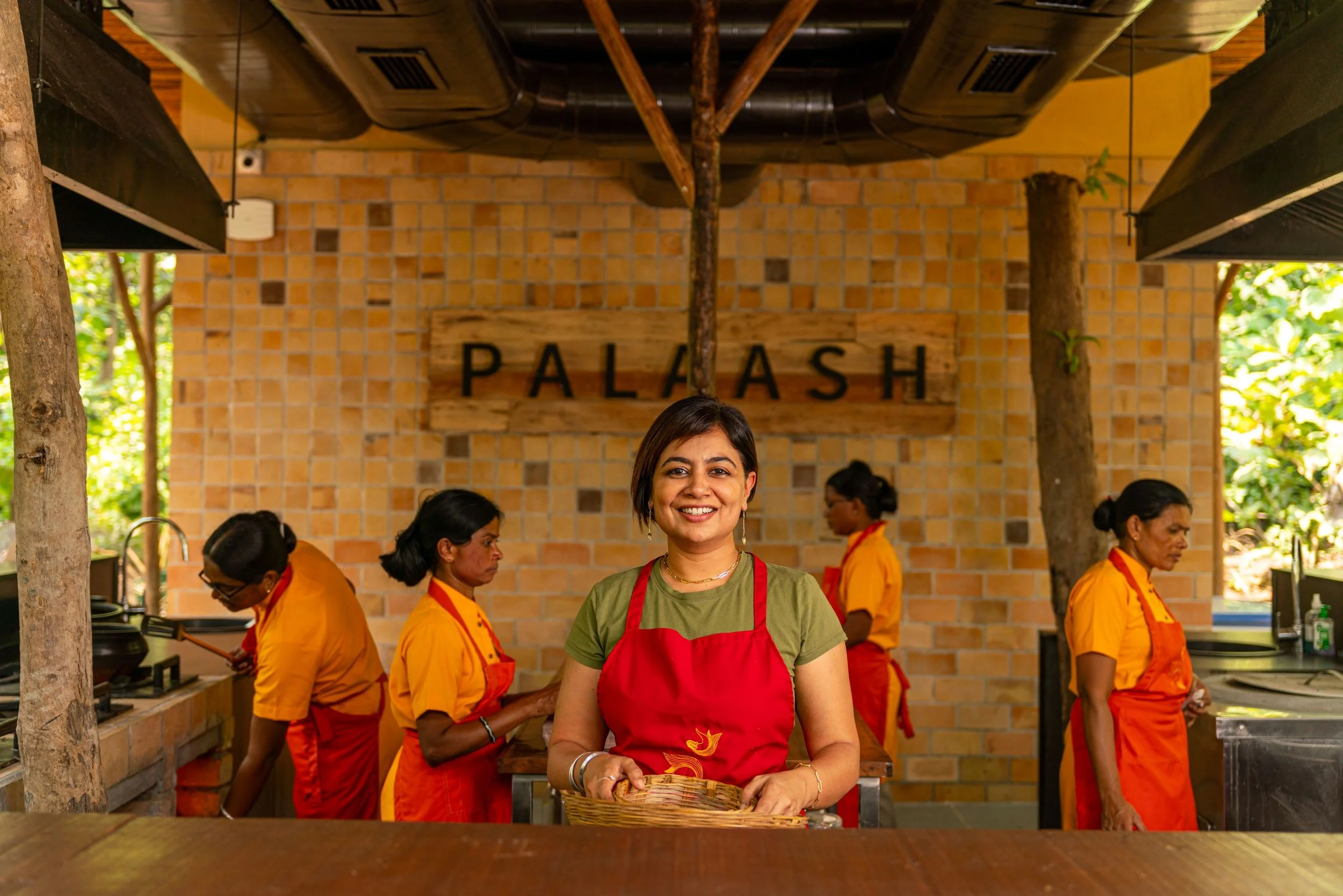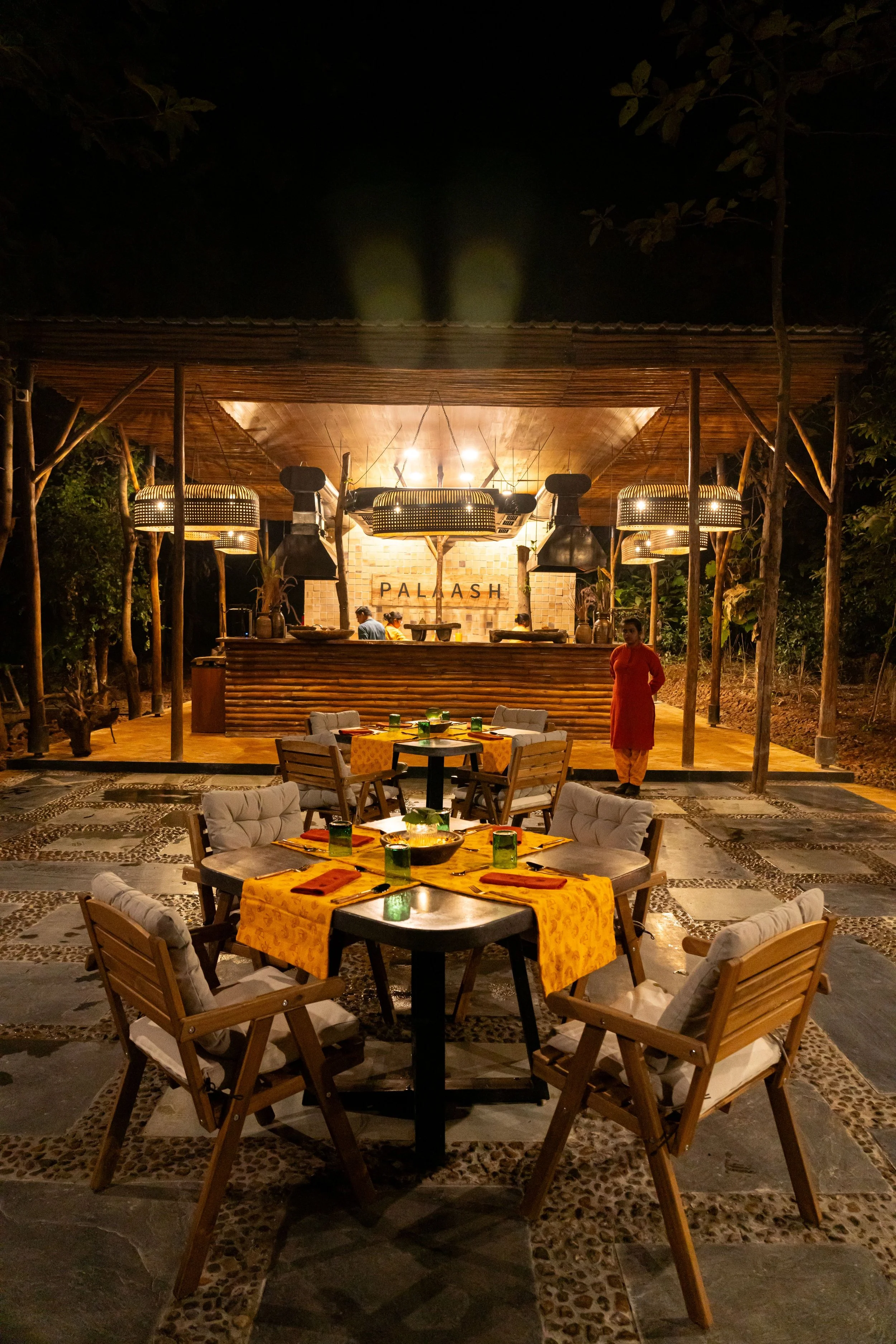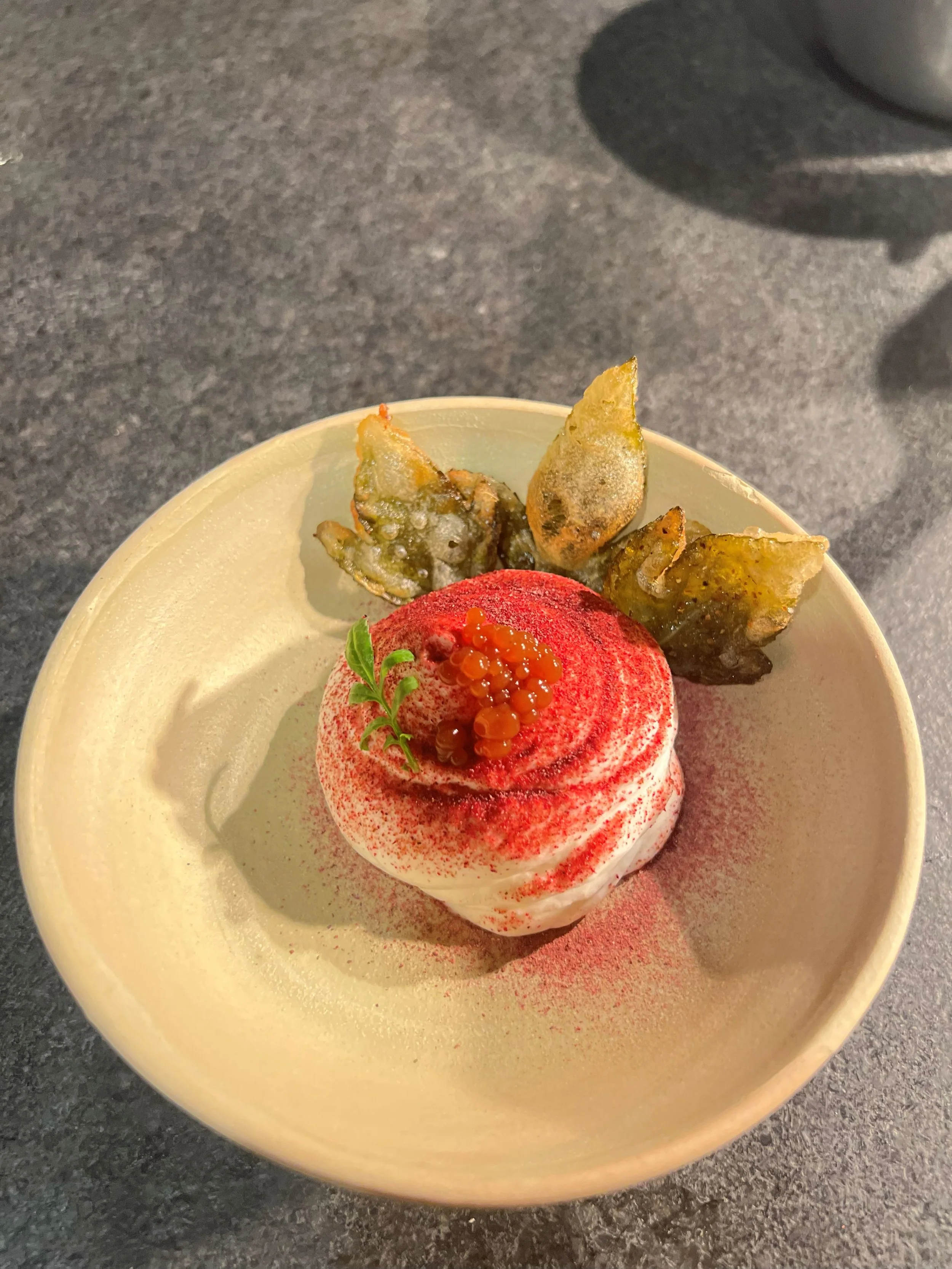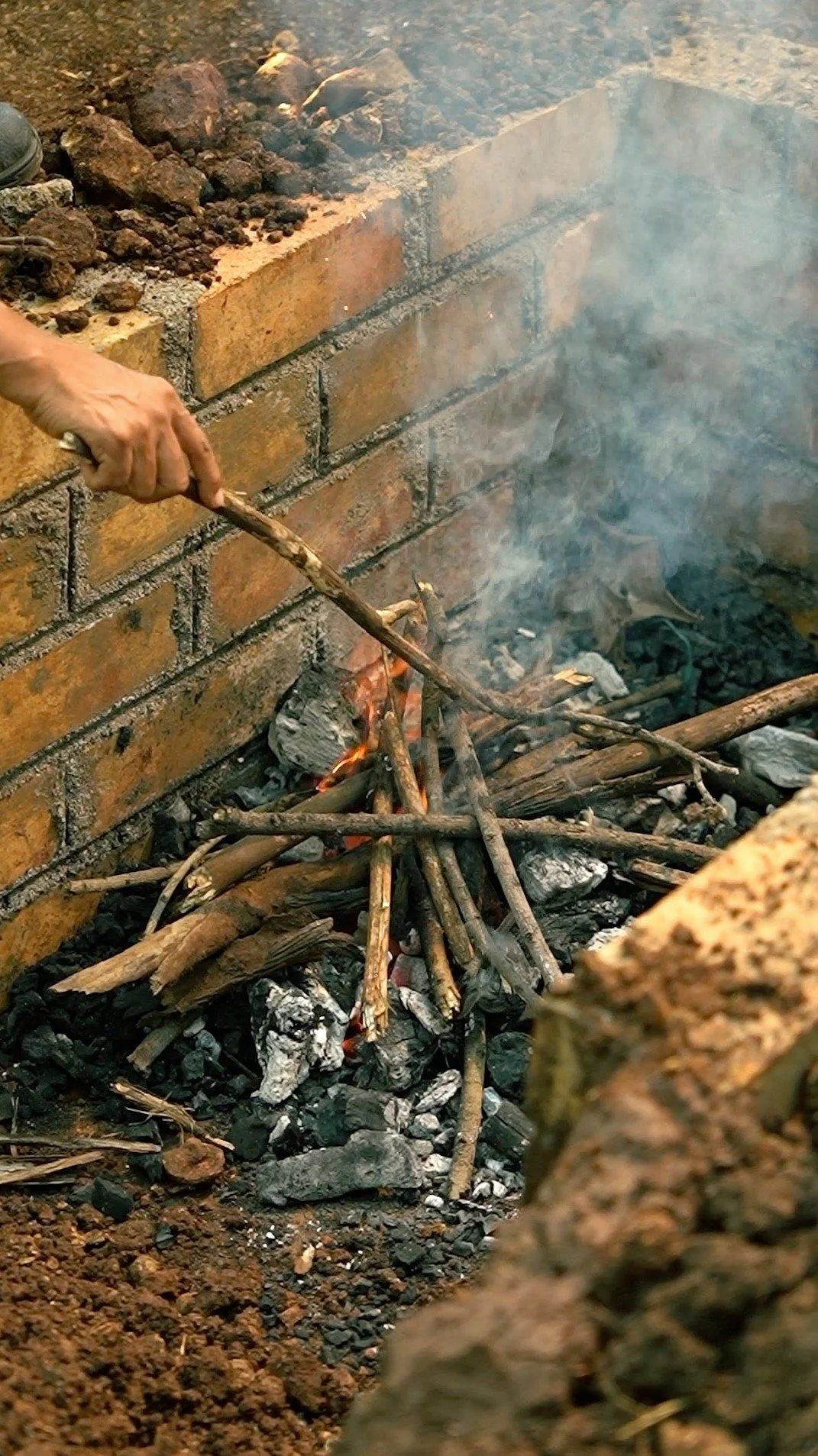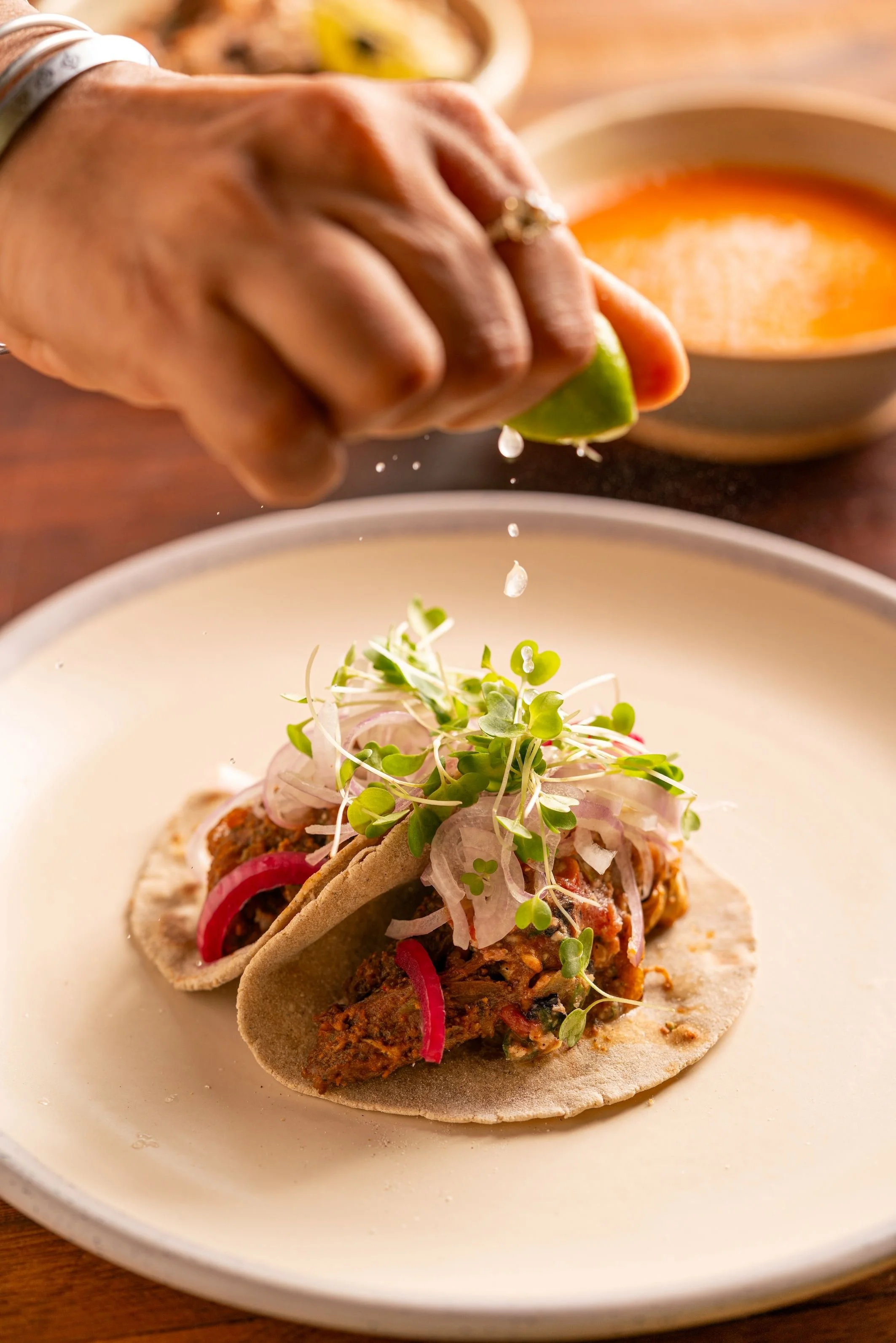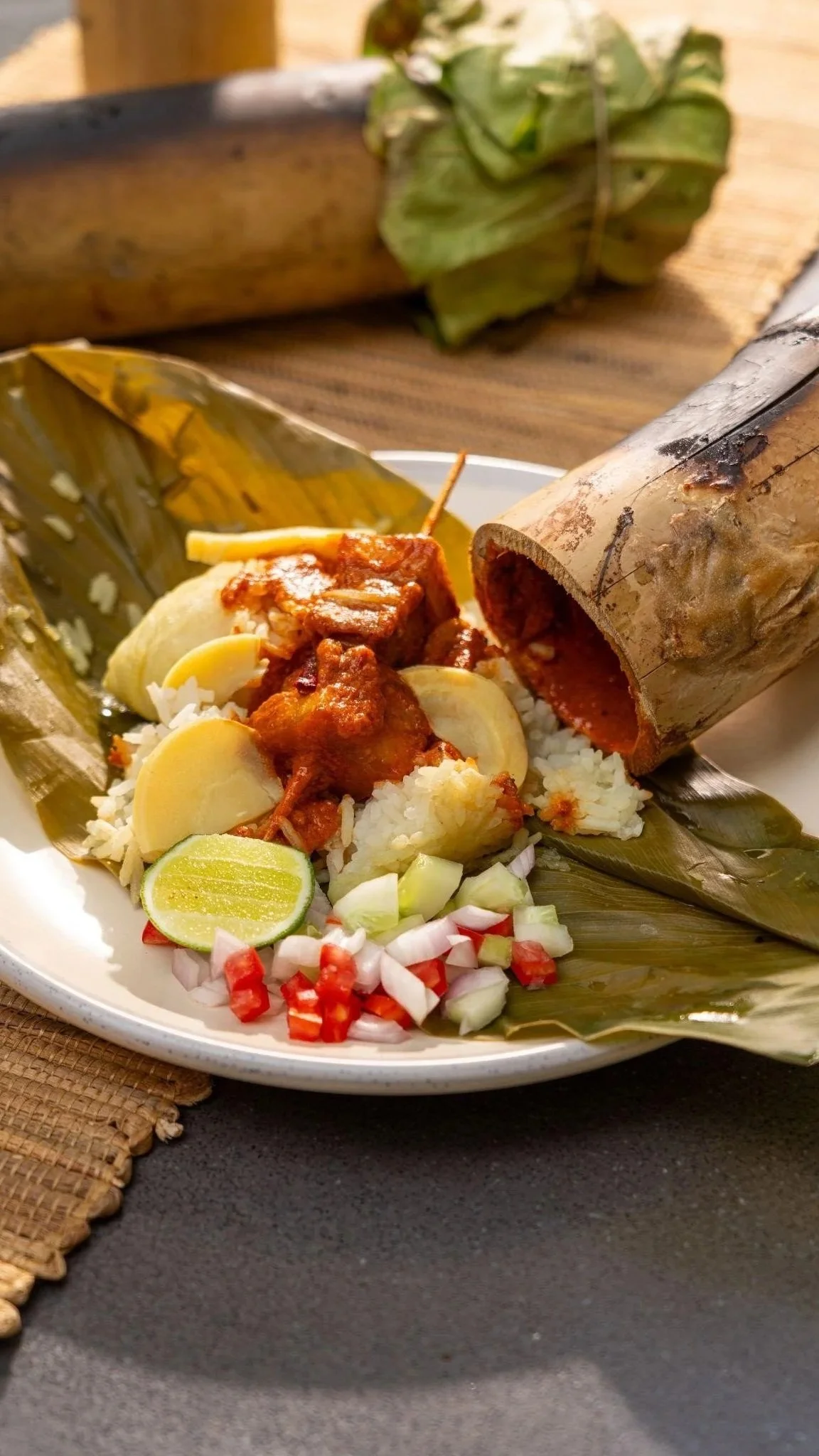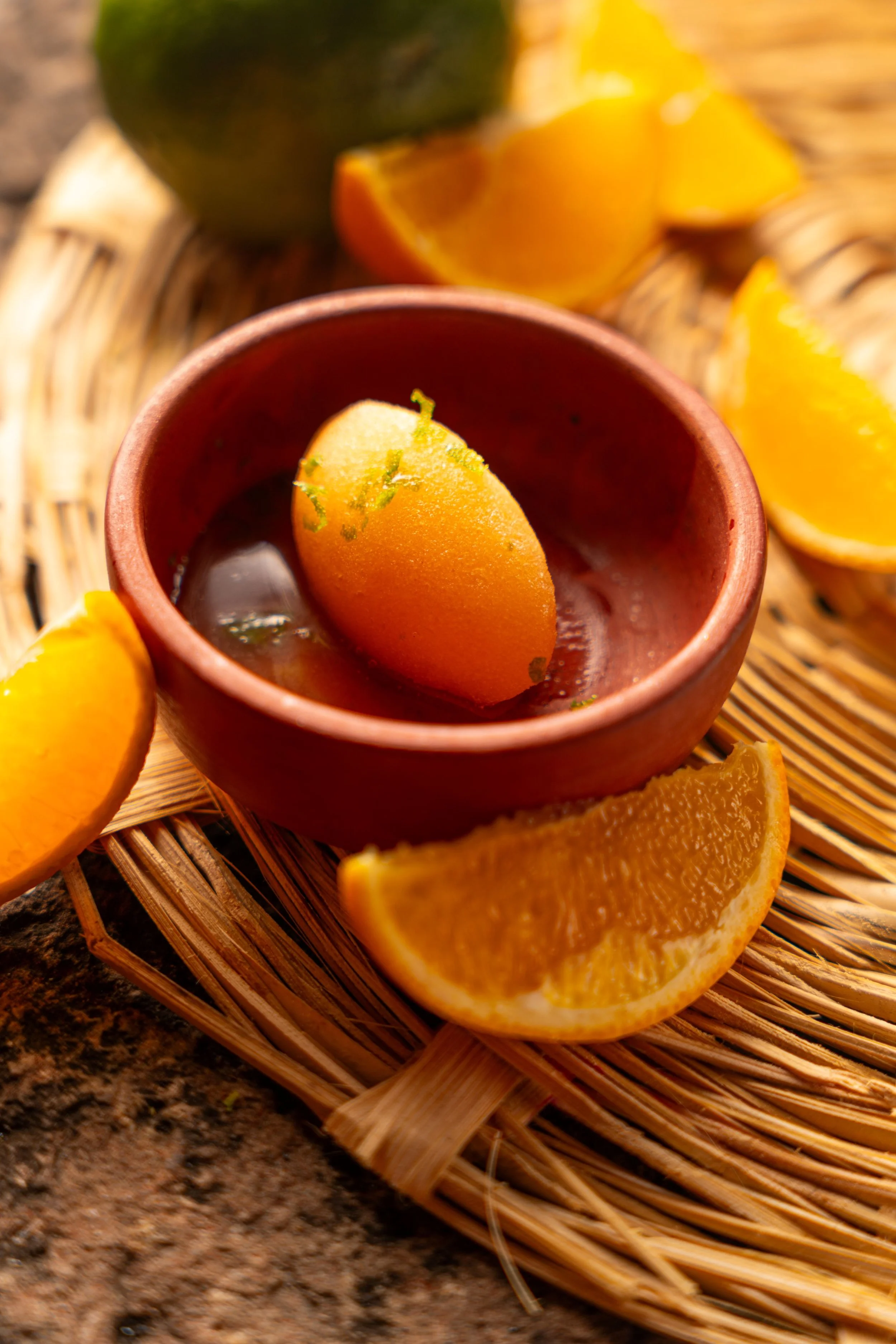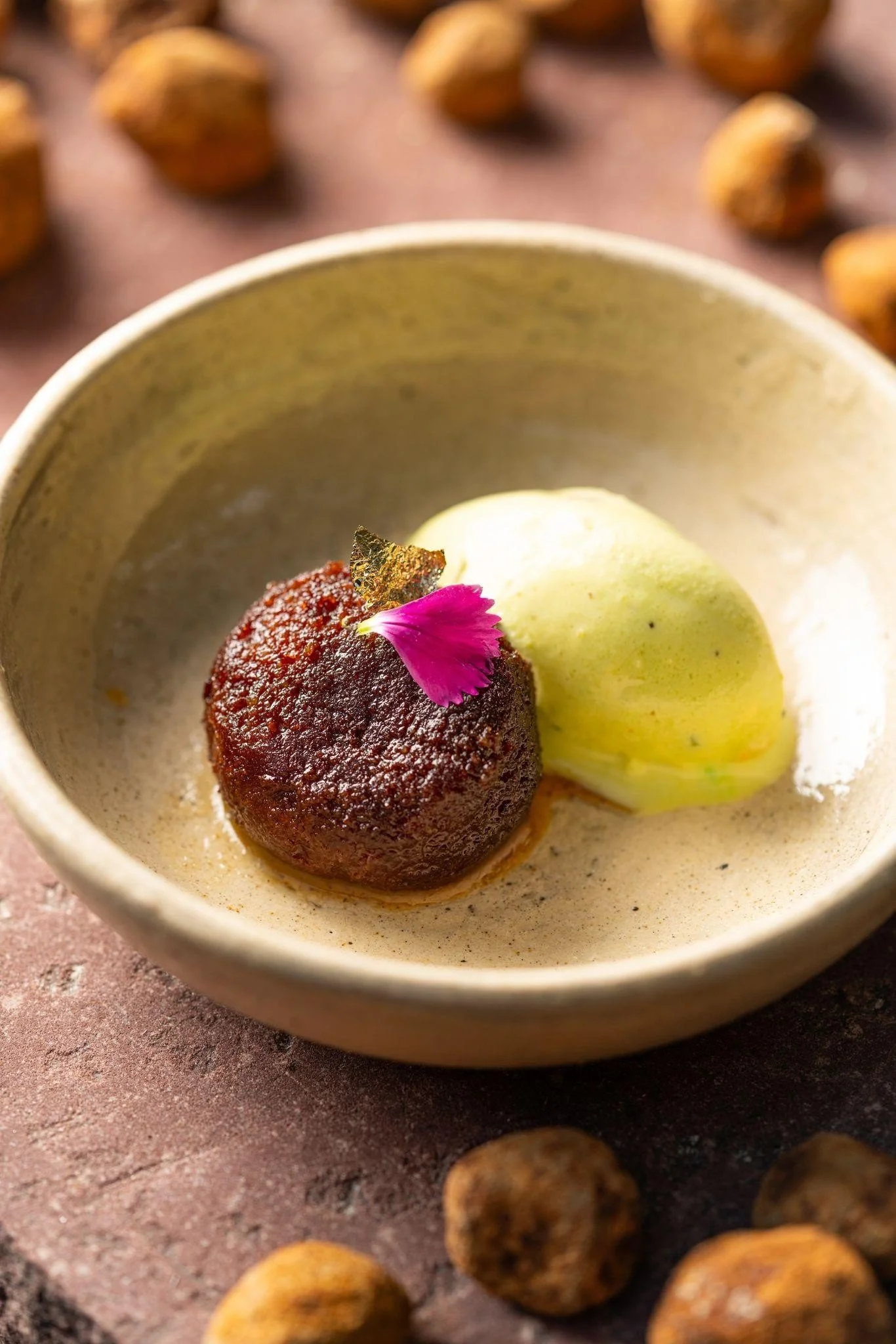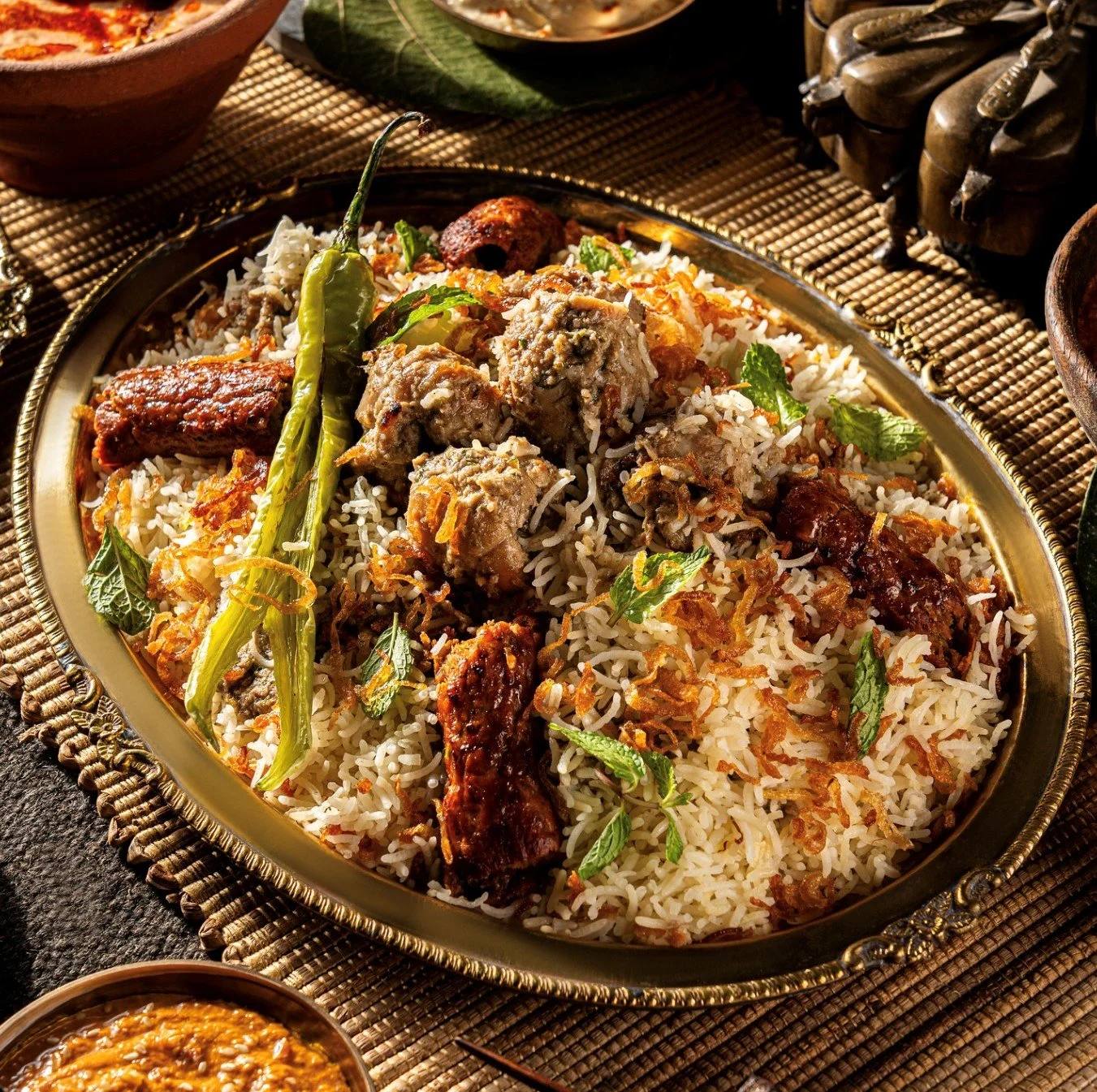The Forest as a Kitchen: How Amninder Sandhu Blends Tradition and Terrain

In the heart of Tipeshwar Wildlife Sanctuary, Chef Amninder Sandhu transforms the forest floor into a kitchen. Using local ingredients and traditional techniques, she creates a degustation experience rooted in place and memory. Satarupa Mitra finds that each dish reflects the land, its bounty, and the hands that prepare it.
There’s an uncanny stillness in the forest under the fierce summer sun of this landlocked wilderness. About two and a half hours from Nagpur, on the fringes of Tipeshwar Wildlife Sanctuary, lies Tipai, home to Palaash, an intimate bush dining experience set deep within the forest floor and encircled by palash and bamboo trees.
At its centre is the kitchen: a modest, open space anchored by a stone slab, where food is cooked over chulhas and sigris, using cookware of cast iron, bamboo, and stone. The air carries the soft crackle of firewood, the fragrance of spices blending with the forest’s own perfume, and the quiet rhythm of a meal coming together. Here, Chef Amninder channels the landscape — its textures, its silences, its generosity, into a form of cooking that feels elemental.
Amninder Sandhu at Palaash.
The open kitchen at Palaash seamlessly blends into the surrounding forestscape, blurring the lines between wilderness and culinary craft. Images credit: Palaash
Chef Amninder Sandhu has carved a distinct space in India’s culinary landscape with a philosophy rooted in less is more; simple is beautiful. From her early days in the kitchen at Taj Lands End to leading Arth, India’s first gas-free restaurant, and later launching Ammu during the pandemic, her journey has been defined by a quiet revolution in the Indian culinary scene. Then came Bawri, a fine dining in regional cuisine, Palaash, and Kikli in Delhi. Bawri, a fine-dining exploration of regional cuisine, followed, along with Palaash and Kikli in Delhi.
Palaash is particularly notable — the first time a full degustation menu was served outside the confines of a traditional restaurant. What makes the experience truly exceptional is the team of local women who now run the kitchen alongside Amninder, replicating her cooking and plating style with chef-level precision.
“I love rustic, wholesome meals, but that doesn’t mean they lack technique,” she notes. “Some of the most delicious food in the world looks deceptively simple, but behind that simplicity lies extraordinary skill and precision.”
Her degustation menu is rooted in the region’s native bounty and forgotten recipes, a careful revival of flavours and techniques that grounds each dish in place, memory, and craft.
A soil grafting mishap gave rise to fifty wild orange trees. The oranges with their vibrant orange core and bold, sour kick are turned into a zesty lime sorbet. Image by Satarupa Mitra.
Ambadi (roselle) chaat has crispy ambadi leaves, with a side of charred pineapple granita whipped in curd and garnished with an ambadi flower dust. Image by Satarupa Mitra.
“I’ve always dreamt of digging into the earth and cooking beneath it — there’s a certain magic in that,” says Amninder, referring to her underground barbecue pit at Palaash. Here, she showcases the traditional Rajasthani art of khad cooking with a smoky, succulent raan. It is slow-cooked underground in a barbeque pit; the meat is wrapped in fig leaves, heated underground with charcoal heat for six to eight hours, until it falls off the bone.
The underground barbeque pit at Palaash where Amninder prepares the raan for 7-8 hrs.
The raan is meat is wrapped in fig leaves and slow-cooked underground.
Slow-cooked raan strips atop mini bhakris, spiced with fiery lal thecha, (made of smoked tomatoes) are savoured taco-style—dipped in a robust Kolhapuri tamra rasa, a soup made of coconut and the milder byadgi chilli found in the region.
“Our cuisine is so diverse that most parts of India is not aware what most eat in other regions ,” says Amninder. Digging into the region’s native bounty and reviving forgotten recipes has shaped Chef Amninder Sandhu’s degustation menu. In the area around Nagpur, for example, a soil grafting mishap led to the growth of fifty wild orange trees. “They look like lime on the outside, but slice them open and you’ll find a vibrant orange core with a bold, sour kick,” she notes, incorporating the fruit into a zesty lime sorbet.
Traditional techniques remain central to the kitchen at Palaash. Thecha, a spicy Maharashtrian condiment, is prepared the conventional way: one of the women in the kitchen grinds green chilies, garlic, coriander, cumin, and salt on a silbatta, demonstrating the patience and precision these recipes require.
For Chef Amninder, training local women to run the kitchen is as much about preserving technique as it is about empowerment. She describes her goal as helping the women recognize the value of everyday skills that are often overlooked outside the home. “The women in my kitchen often don’t realise that the everyday things they cook are worth serving in a restaurant. Women cook better than men,” she says matter-of-factly. “They deserve the opportunity to showcase their craft, and that’s exactly why I trained them.”
The bater is served on a bed of suran and lime purée that goes down nicely with a sweet-tangy blackberry pickle and crisp chicken skin at the top.
I step into the open kitchen, where local women tend to the sigree and chulha. Atop the fire, a black terracotta handi gently cooked Indrayani rice (a fragrant native grain from the Western Ghats) wrapped in pumpkin leaf to preserve its delicate aroma. Just below, mutton is slow-cooking in a bamboo cylinder. “This dish is close to my heart,” says Amninder, calling it a culinary heirloom from her childhood in Northeast India. During visits to her uncle’s home in Deomali, Arunachal Pradesh, the family would gather in the forest to cook fresh catch or game meat in bamboo over an open fire. It was served with bora saul, a glutinous rice from Assam, wrapped in fragrant alpina leaves. Each time she prepares it, she’s reminded of her uncle, who taught her how to seal succulent pork inside bamboo.
Mutton slow cooking in a bamboo cylinder is a culinary heirloom from Amninder’s childhood in Northeast India.
It’s a timeless Naga technique. Bamboo naturally seals in moisture, amplifies flavour, and lends a beautifully delicate, melt-in-the-mouth texture.
A vegetarian dish is Saoji vange, half an aubergine delicately charred, draped in a robust saoji gravy, and served with an eggplant crisp, charred spring onions and chur chur paratha. It is a refined take on the humble Bengali ‘begun pora’.
In Tipeshwar’s dry tropical forests, the Mahua tree blooms in spring and summer, filling the air with a heady aroma that lures wildlife and humans alike. Its flowers are often fermented into a traditional tribal brew. Dessert is Mahua Kala Jamun, a nostalgic yet novel twist.
Gendaphool sorbet features marigolds grown in the garden, drenched in marigold syrup is the perfect palate cleanser, light and floral.
Mahua kala jamun has soft cottage cheese dumplings with a delicate crust, soaked in chilled mahua flower syrup.
Palaash’s bush-style degustation menu offers a deeper glimpse into Amninder’s culinary ethos—“clean, crisp cooking is what I love most,” she says. Her signature cocktail dum biryani at Talaabwali, another dining experience in Tipeshwar, is her homage to the Bandra caterers. “They’d serve biryani with seekh and kofta on the side. I just brought it all together, into one indulgent wholesome plate you’ve never had before.”
Amninder’s signature cocktail dum biryani at Talaabwali, another dining experience in Tipeshwar, features chicken malai kebab, and a succulent seekh kebab, slow-cooked in a custom sand basin over live charcoal, and layered with the rice and birista.
Chef Amninder is quietly reshaping the slow food landscape, drawing on India’s diverse pantry of lesser-known regional ingredients and traditions. What she serves goes beyond a meal — it reflects the land and the communities that sustain it.
Satarupa Mitra is a travel writer based in India and a wildlife photographer with a passion for exploring off-grid destinations where rich cultural narratives have evolved in isolation.
